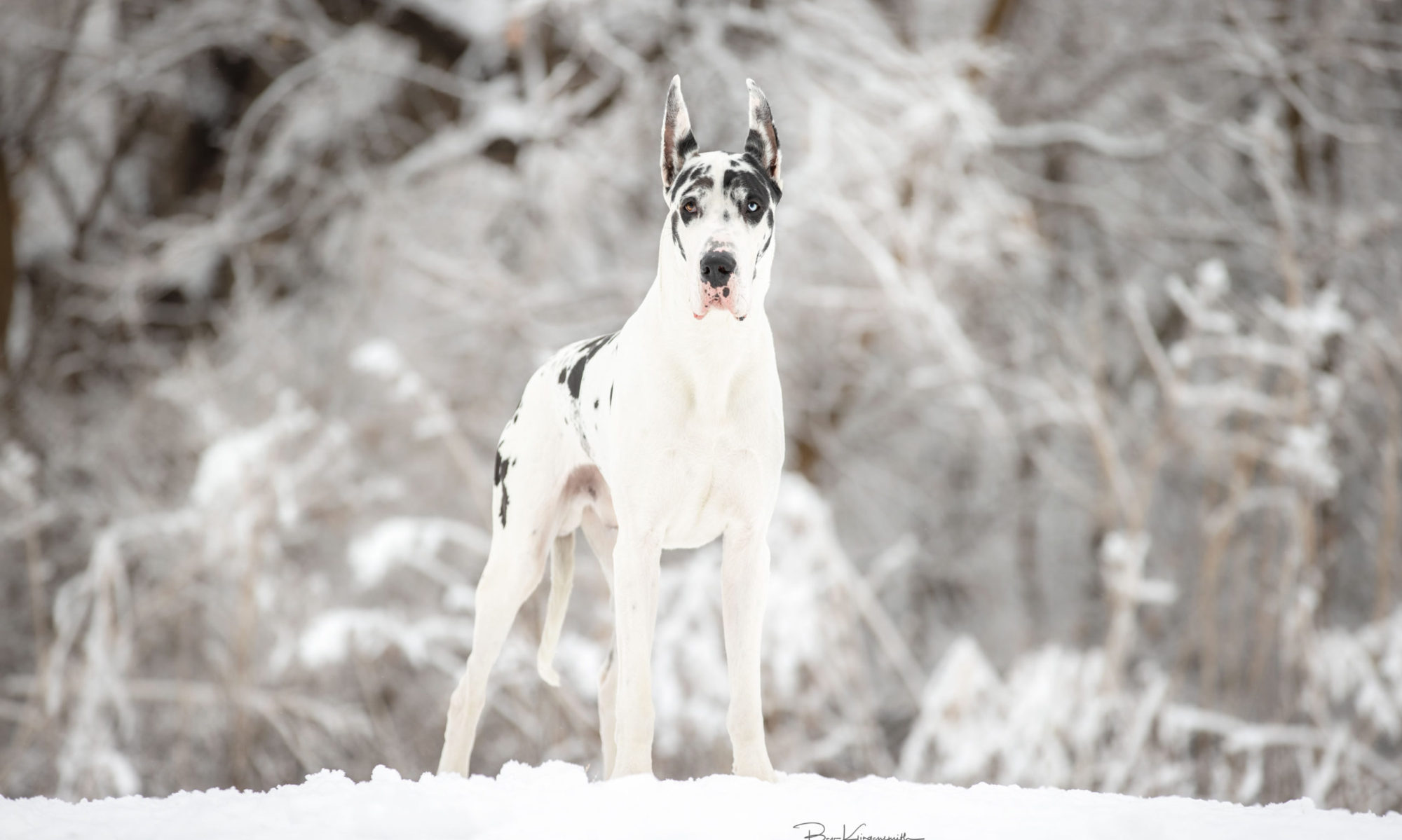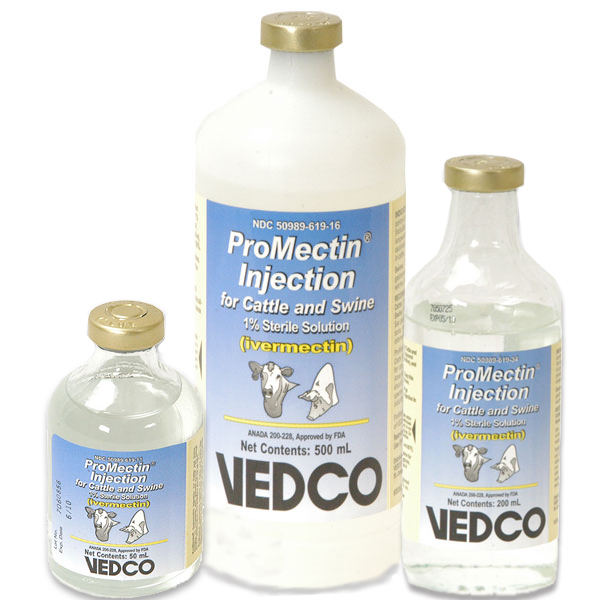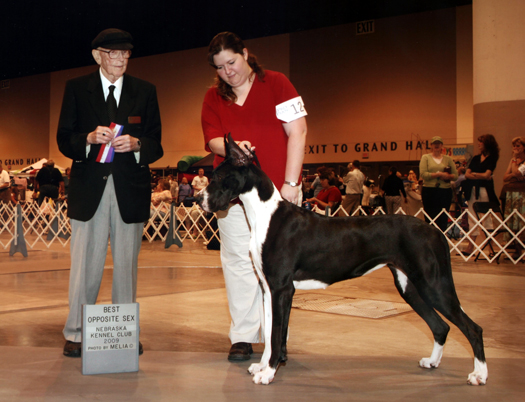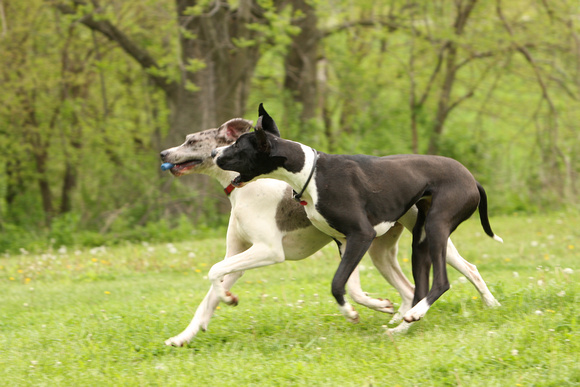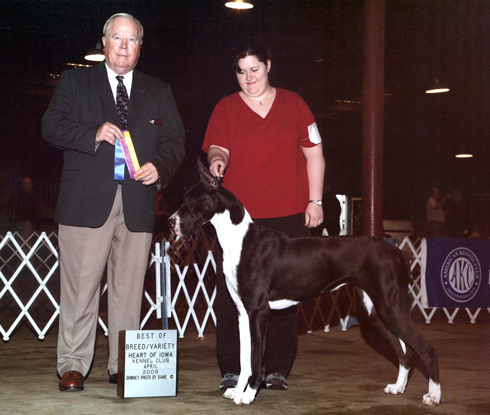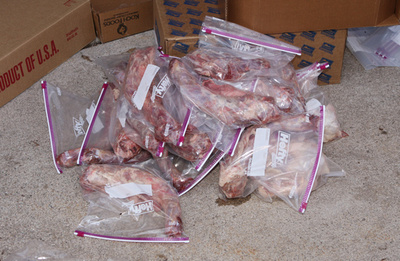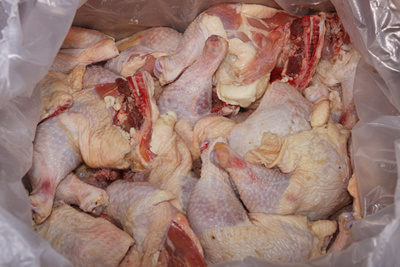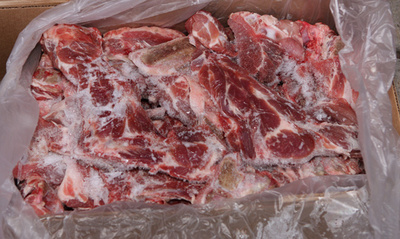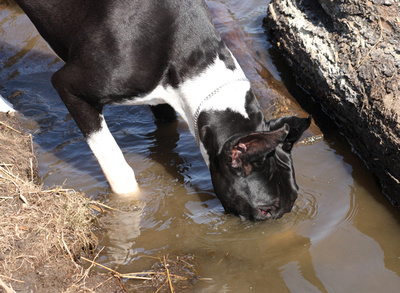Skyy is going to appear in a commercial!
I got a call last week from a production company, interested in having a harlequin Great Dane in a commercial spot they were filming today. We discussed the particulars, the production manager viewed pictures of Skyy and it was agreed that she would fit the bill.
The script was that Skyy would be sitting by her “owner” and a small dog would come into the scene, bark at her and “scare her off”. The “owner” then looks surprised at why her big dog suddenly ran off.
The set was done up to look like a park, filmed in front of a blue screen that will (from my understanding) become a park background during the editing process.

Skyy was such a good girl! She was extremely patient and tolerant of all the people, the small dog (who vocalized to her that he was very, very tough), the camera, the lights, etc.
Her job was mainly sit-stays and a “look down” (to appear she was looking at the small dog), then the running out of the scene. The two dogs were filmed separately and the scenes were combined in the editing process.
Our biggest challengewas that they wanted Skyy sitting facing one direction and then to run out of the scene the other direction. Because I had to stand behind her to call her, she ended up twisting her head around to watch me during her sit stay, which didn’t work for the shot.
The “look down” was comical, as she mostly ignored the distractions trying to encourage her to look down. We resorted to throwing treats on the ground!
All in all, she did a wonderful job. Her solid temperament really shinned to be able to take all that in stride!
The commercial is for MetaBank and will air regionally.
It was certainly an interesting experience! Hopefully her new found fame doesn’t completely go to her head. Excuse me, I must go now…Her Highness is currently resting and has requested steak for dinner. I mustn’t keep her waiting!
Update: Check out the finished commercial.
